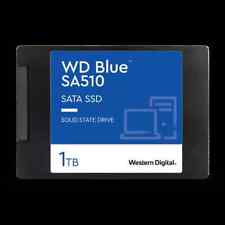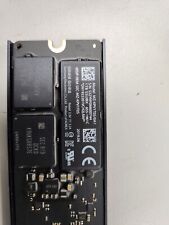-
Senior Member
registered user
ACPI it's not just for laptops.
Does your laptop need ACPI becasue it overheats? Tired of using a power strip to shut down your desktop becasue it won't power down correctly with APM? ACPI might just be your answer. It should be noted that ACPI does not work on all machines.
This is the easiest way I know of to get acpi working.
First you need an acpi patched kernel.. Oh No! you say- I Don't know how to build an acpi patched kernel. Not to worry. Thanks to the excellent efforts of Kano this couldn't possibly be any easier. It's already built!- you just have to install it and that's easier than falling off a dead horse. You can get the kernel and install scripts here:
http://debian.tu-bs.de/knoppix/Kano
For laptop owners get the kernel-2.4.21-acpi.zip . For desktop owners get the kernel-2.4.21-ck3.zip . Everything you need is in the .zip file.
Make a new directory to unzip all of this into unless you want an entire herd of files floating around.
mkdir newkernel
Become root:
su
<password>
Download your kernel.zip into your newly created directory.
cd newkernel
unzip kernel-2.4.21-acpi.zip
*NOTE* Before continuing you should do uname -r . if you have a 2.4.20-xfs kernel then no changes are necessary. If you have 2.4.21-xfs then you need to either edit the next to last line of ./install-kernel-knoppix.sh to reflect your kernel version. It should look like this after editing:
ln -sf boot/vmlinuz-2.4.21-xfs /vmlinuz.old
or give this command in the newkernel directory:
perl -pi -e 's/2.4.20-xfs/2.4.21-xfs/' install-kernel-knoppix.sh
Now, on with the show.....
./install-kernel-knoppix.sh
cd /boot
ls
You should see a new symlink called vmlinuz
ls -al vmlinuz
lrwxrwxrwx 1 root root 19 Aug 2 06:07 vmlinuz -> vmlinuz-2.4.21-acpi
or... if you installed 2.4.21-ck3:
lrwxrwxrwx 1 root root 18 Aug 15 21:27 vmlinuz -> vmlinuz-2.4.21-ck3
Yes! The new kernel is installed.
Now you need to edit LILO.
sudo xedit /etc/lilo.conf
(of course you may use any editor that you prefer).
The installation script linked your original kernel to LinuxOLD and you no longer need to use initrd! So, you need to move initrd to LinuxOLD. Here is an example for the new LILO entry for the new vmlinuz kernel and an example of what vmlinuz.old should look like:
default=Linux
image=/boot/vmlinuz
label=Linux
read-only
image=/vmlinuz.old
label=LinuxOLD
initrd=/boot/initrd.gz
This way you can still boot your old kernel by selecting LinuxOLD. In fact-you could copy/paste the above and comment (add a '#' to the front of) the other kernel entries if you like.
After everything looks right in LILO you need to run it.
/sbin/lilo
It should return
Added Linux
Added LinuxOLD
Of course if there were any errors you'll need to fix them and rerun LILO.
*NOTE* According to the acpi documentation if you have problems with acpi it may be necessary to add the following to the append="" line in /etc/lilo.conf:
acpi=off
reboot
uname -r
*If you don't see 2.4.21-acpi (or 2.4.21-ck3)then you did not boot the new kernel. Go back and fix lilo.*
cd newkernel
Become root.
If you installed kernel-2.4.21-acpi then do the following:
./install-acpi-modules.sh | tee acpi.log
If you've installed kernel-2.4.21-ck3 then do this:
./install-ospm-modules.sh | tee acpi.log
That's the only difference in installation procedures for the two kernels.
You should now have a file called acpi.log in your newkernel directory. Have a look at it- see what installed. *Note that not every machine will support every option. When viewing the acpi.log the message NOT WORKING should not necessarily be determined as a failed installation.*
apt-get remove --purge apmd
apt-get install acpid
If you installed 2.4.21-acpi you can also do this:
apt-get install acpi
That's it!
Now you should be able to determine some info about your hardware.
acpi -V
Should return something like so:
Battery 1: unknown, 100%
Thermal 1: ok, 62.0 degrees C
AC Adapter 1: on-line
That's with the ac adapter plugged in of course. 
cat /proc/acpi/info
version: 20030619
states: S0 S1 S3 S4 (swsusp) S5
cat /proc/acpi/battery/BAT1/info
present: yes
design capacity: 3600 mAh
last full capacity: 3031 mAh
battery technology: rechargeable
design voltage: 10800 mV
design capacity warning: 61 mAh
design capacity low: 0 mAh
capacity granularity 1: 36 mAh
capacity granularity 2: 36 mAh
model number: P71048002110
serial number: 1600242472
battery type: Li-ION
OEM info:
Is this cool or what?? Go ahead and cd /proc/acpi and have a look around. Different systems will support different options. This is really only the beginning as acpi is a rather broad subject. Unfortunately the standards for acpi are not strictly adhered to.
This kernel also has the swsusp patch (software suspend) since suspend isn't supported in the Linux kernel this is an alternative wat to use suspend. The documentation can be found here:
/usr/share/doc/kernel-doc-2.4.21-acpi/Documentation/swsusp.txt.gz
http://swsusp.sourceforge.net/
If you're using KDE then you can set up acpi from the Control Center>Power Control>Laptop Battery. Additionally you may choose to have an icon in your system tray indicating the charge state of your battery. By right clicking the icon you can also set up acpi. Be aware that acpi doesn't work on every machine. Fortunately Kano was also kind enough to include scripts to uninstall the kernel and acpi patch.
Commands you can issue to put your machine into various sleep states:
http://acpi.sourceforge.net/documentation/sleep.html
ACPI documentation can be found here:
/usr/share/doc/kernel-doc-2.4.21-acpi
ACPI project page:
http://acpi.sourceforge.net/
Great girlgeek doc:
http://xtrinsic.com/geek/articles/acpi.phtml
Tuxmobil:
http://tuxmobil.org/apm_linux.html
http://www.cpqlinux.com/acpi-howto.html
If you have any tips/tricks experiences or otherwise for ACPI in Linux please feel free to add them here.
*** No wimpdoze users were harmed either emotionally or physically during the installation of this bitchin' kernel.*** 
-
acpi kernel trouble
Hi there!
After trying other solutions (compile a new kernel, etc.) I followed your instructions on a Compaq Presario 700. All went fine but now it just doesnt boot with no error messages.
What shall I do to revert to the old kernel? Can anyone help me here?
I don't have a lot of experience so I need rather precise hints.
TIA
Paulo Soares
-
Senior Member
registered user
Well, you can always boot Knoppix cd and fix your install from there. Here's a post on how to fix lilo with Knoppix cd here. Do you still get the prompt to select your os or does it just boot without offering you a choice? You should still be able to select LinuxOLD and boot your old kernel.
-
Thank you. With your suggestion I was able to fix it.
Do you have any idea why the new kernel failed to boot in this machine?
-
Senior Member
registered user
Do this:
cd /boot
ls
You should have a symlink called vmlinuz. Do this:
ls -al vmlinuz
It should tell you this:
lrwxrwxrwx 1 root root 19 Aug 2 06:07 vmlinuz -> vmlinuz-2.4.21-acpi
(I presume you are using the laptop kernel).
When you boot do you get the option to choose from Linux and LinuxOLD? If so, when you select Linux what happens? Nothing at all?
What does acpi.log tell you?
-
Thanks for your help.
The answer to all your questions is Yes except to the last one. When I choose Linux at the boot menu nothing happens and I get a blank screen.
Note that I followed the instructions carefully and there were no errors reported.
I didn't get to install the acpi-modules because I couldn't reboot with the new kernel. So there is no acpi.log.
-
Senior Member
registered user
Let's see /etc/lilo.conf although I don't think that's the problem. My only suggestion is to use the script that you downloaded with the kernel and uninstall the kernel and try again.
-
I followed your suggestion but the problem remains. Here it is /etc/lilo.conf.
vga=791
# /etc/lilo.conf - See: `lilo( ' and `lilo.conf(5)',
' and `lilo.conf(5)',
# --------------- `install-mbr( ', `/usr/share/doc/lilo/',
', `/usr/share/doc/lilo/',
# and `/usr/share/doc/mbr/'.
# +---------------------------------------------------------------+
# | !! Reminder !! |
# | |
# | Don't forget to run `lilo' after you make changes to this |
# | conffile, `/boot/bootmess.txt', or install a new kernel. The |
# | computer will most likely fail to boot if a kernel-image |
# | post-install script or you don't remember to run `lilo'. |
# | |
# +---------------------------------------------------------------+
# Support LBA for large hard disks.
#
lba32
# Overrides the default mapping between harddisk names and the BIOS'
# harddisk order. Use with caution.
#disk=/dev/hde
# bios=0x81
#disk=/dev/sda
# bios=0x80
# Specifies the boot device. This is where Lilo installs its boot
# block. It can be either a partition, or the raw device, in which
# case it installs in the MBR, and will overwrite the current MBR.
#
boot=/dev/hda
# Specifies the device that should be mounted as root. (`/')
#
root=/dev/hda1
# Enable map compaction:
# Tries to merge read requests for adjacent sectors into a single
# read request. This drastically reduces load time and keeps the
# map smaller. Using `compact' is especially recommended when
# booting from a floppy disk. It is disabled here by default
# because it doesn't always work.
#
# compact
# Installs the specified file as the new boot sector
# You have the choice between: bmp, compat, menu and text
# Look in /boot/ and in lilo.conf(5) manpage for details
#
install=/boot/boot-menu.b
# Specifies the location of the map file
#
map=/boot/map
# You can set a password here, and uncomment the `restricted' lines
# in the image definitions below to make it so that a password must
# be typed to boot anything but a default configuration. If a
# command line is given, other than one specified by an `append'
# statement in `lilo.conf', the password will be required, but a
# standard default boot will not require one.
#
# This will, for instance, prevent anyone with access to the
# console from booting with something like `Linux init=/bin/sh',
# and thus becoming `root' without proper authorization.
#
# Note that if you really need this type of security, you will
# likely also want to use `install-mbr' to reconfigure the MBR
# program, as well as set up your BIOS to disallow booting from
# removable disk or CD-ROM, then put a password on getting into the
# BIOS configuration as well. Please RTFM `install-mbr( '.
'.
#
# password=tatercounter2000
# Specifies the number of deciseconds (0.1 seconds) LILO should
# wait before booting the first image.
#
delay=100
# You can put a customized boot message up if you like. If you use
# `prompt', and this computer may need to reboot unattended, you
# must specify a `timeout', or it will sit there forever waiting
# for a keypress. `single-key' goes with the `alias' lines in the
# `image' configurations below. eg: You can press `1' to boot
# `Linux', `2' to boot `LinuxOLD', if you uncomment the `alias'.
#
# message=/boot/bootmess.txt
# prompt
# single-key
# delay=100
# timeout=100
# Kernel command line options that apply to all installed images go
# here. See: The `boot-prompt-HOWO' and `kernel-parameters.txt' in
# the Linux kernel `Documentation' directory.
#
# append=""
append="hda=scsi hdb=scsi hdc=scsi hdd=scsi hde=scsi hdf=scsi hdg=scsi hdh=scsi apm=power-off nomce"
# Boot up Linux by default.
#
default=Linux
image=/boot/vmlinuz
label=LinuxNEW
read-only
# restricted
# alias=1
image=/vmlinuz.old
label=Linux
initrd=/boot/initrd.gz
read-only
optional
# restricted
# alias=2
# If you have another OS on this machine to boot, you can uncomment the
# following lines, changing the device name on the `other' line to
# where your other OS' partition is.
#
# other=/dev/hda4
# label=HURD
# restricted
# alias=3
-
Senior Member
registered user
Try changing LILO to read as I have added in bold. Then , once you get it to boot properly you can change the labels for each kernel if you want to.
Change this....
Code:
# Boot up Linux by default.
#
default=Linux
image=/boot/vmlinuz
label=LinuxNEW
read-only
# restricted
# alias=1
To this:
default=Linux
image=/boot/vmlinuz
label=Linux
read-only
And change this:
Code:
image=/vmlinuz.old
label=Linux
initrd=/boot/initrd.gz
read-only
optional
To this:
image=/vmlinuz.old
label=LinuxOLD
initrd=/boot/initrd.gz
-
Sorry, no good. You have been very helpful but it looks like something else is wrong.
I know acpi is supported in this laptop (Compaq Presario 700) with the kernel 2.4.20. I read somewhere that kernel 2.4.21 was sometimes problematic. It may be this the case.
Thanks again.
Paulo Soares
Similar Threads
-
Replies: 190
Last Post: 07-22-2007, 04:12 PM
-
By OP4Latino in forum Hardware & Booting
Replies: 0
Last Post: 05-27-2005, 06:27 AM
-
By Longfield in forum Laptops
Replies: 0
Last Post: 05-12-2005, 11:54 AM
-
By pstroka_taran in forum Laptops
Replies: 2
Last Post: 10-24-2004, 06:42 AM
-
By mithrill in forum General Support
Replies: 4
Last Post: 04-10-2003, 03:10 AM
 Posting Permissions
Posting Permissions
- You may not post new threads
- You may not post replies
- You may not post attachments
- You may not edit your posts
-
Forum Rules


Western Digital 1TB WD Blue PC Desktop 3.5'' Internal CMR Hard Drive - WD10EARZ
$44.99

Western Digital 1TB WD Blue SA510 SATA SSD Internal 2.5”/7mm Cased - WDS100T3B0A
$79.99

2TB 1TB TYPE-C OTG Stick 4 in 1 USB Memory Photo Stick Android Samsung Pen Drive
$27.45

Western Digital 1TB WD Gold Enterprise Class SATA Internal HDD - WD1005FBYZ
$84.99

Patriot P210 128GB 256GB 512GB 1TB 2TB 2.5" SATA 3 6GB/s Internal SSD PC/MAC Lot
$19.99

Samsung - 980 PRO 1TB Internal Gaming SSD PCIe Gen 4 x4 NVMe
$109.99

Samsung - Geek Squad Certified Refurbished 870 EVO 1TB SATA Solid State Drive
$67.99

2 PACK Seagate ST1000LM035 Mobile HDD 1TB 2.5" SATA III Laptop Hard Drive
$26.89

1TB/2TB USB 3.0 Flash Drive Thumb U Disk Memory Stick Pen PC Laptop Storage lot
$773.19

Apple 1TB Solid State Drive for Apple MacBook Pro
$80.00



 Reply With Quote
Reply With Quote










